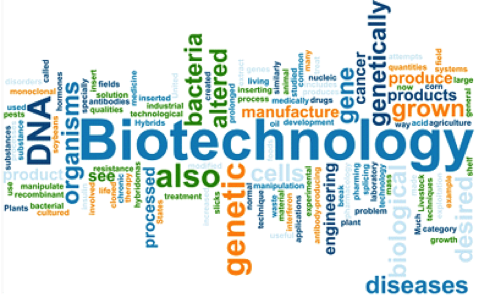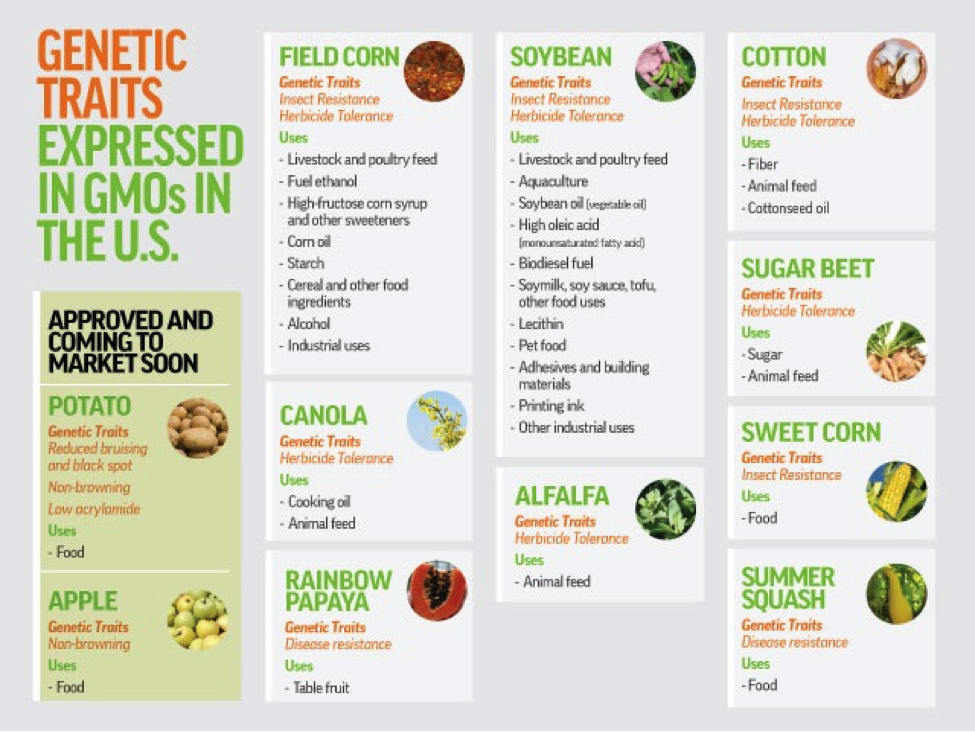Biotech Literacy Day at the University of Florida
Biotechnology in agriculture (aka “GMOs”) is a major topic of discussion today. People are asking questions and seeking more information about biotechnology – what it is, what role it plays in agriculture and what the future holds.
As part of our effort to make information about GMOs easier to access and understand, this post provides an overview of the key topics discussed during the University of Florida’s Agricultural Biotechnology Literacy and Communications Day on May 11, 2015.

First, what is Biotechnology?
It is a set of tools that uses living organisms (or parts of organisms) to make or modify a product, improve plants, trees or animals, or develop microorganisms for specific uses. Examples of biotechnology include traditional applications, such as enzymes and yeasts used in the making of bread, cheese, wine and beer, and more modern applications to grow or culture cells for research or to make genetically modified crops for food, livestock feed, fuel and fiber.
Why host a Biotech Literacy Day?
According to Dr. Kevin Folta, professor and chair of horticultural sciences at the University of Florida, "This is a way for the University of Florida to invite some of the world's experts to come and talk about what this technology is, what it does and what it doesn't do, its strengths and limitations, and also how to communicate about it. It's an important story."
Feeding a Global Population
In his presentation, Dr. Folta emphasizes the importance of biotechnology in feeding a global population, estimated to be nine (9) billion or more people in the near future. GMOs have been in use for 20 years, and he explains, “Biotechnology has done tremendous things for farmers being able to grow the same amount with less input, or maybe grow a little bit more with the less input.” This technology can be used for “farmers to farm, greater profit, more choices for consumers, and less impact on the environment.”
How do Biotech Traits work?
In his presentation, Dr. Curt Hannah, professor of horticultural sciences at the University of Florida, demystifies biotechnology by explaining how traits are developed to improve a crop. This process is done by using “agrobacterium to place a gene of interest into a single cell. The single cell is then cultured into an entire plant containing the gene.” Here is a list of genetic trait expressed in the eight commercially available GM crops, plus in the two others that are approved and coming to market soon:

- Watch Dr. Hannah's full presentation here.
Dr. Keith Schneider, professor of food science and human nutrition at the University of Florida, presents an overview of how GM crops are tested, regulated and approved in the United States, including why and how the regulatory environment around GM crops evolved.
Crops from GM seeds are studied extensively to make sure they are safe for people, animals and the environment. Today’s GM products are the most researched and tested agricultural products in history.
In the United States, GM crops are reviewed by at least two, and sometimes three, federal regulatory agencies: the U.S. Department of Agriculture (USDA), the Environmental Protection Agency (EPA) and the Food and Drug Administration (FDA).

Dr. Karl Haro von Mogel, public research scientist and chair of Biology Fortified, Inc., points out that although the most common GM crops farmers use today include traits for herbicide and insect resistance, many other beneficial GM crops exist. Crops that can improve human nutrition and health, such as high oleic soybeans and Golden Rice, are examples of these other traits.
The day was filled with many other discussions led by biotech thought-leaders, and you may be interested in the following presentations:
- Tamar Haspel, journalist and author of the monthly Washington Post column, "Unearthed," provided insights into science communication, trust and public perception of science issues. Watch Tamar's presentation here.
- J.J. Jones from the Center for Food Integrity provided an in-depth look into the center's research on consumer food preferences in his presentation, "Cracking the Code on Food (Biotech) Issues... Communicating as Trusted Scientists." Watch J.J.'s presentation here.
- Vance Crowe, director for millennial engagement at Monsanto, discussed how memes are used to communicate messages to audiences and how they are translated into culture, and their relevance to the GMO conversation. Watch Vance's presentation here.
- Dr. Joy Rumble, assistant professor of agricultural communication at the University of Florida, reviewed a recent survey conducted by the University’s Center for Public Issues Education in Agriculture and Natural Resources that evaluated Florida consumer perceptions of GM crops and products derived from them. She discusses the disconnect between science and public perception. Watch Dr. Rumble's presentation here.
You can read more about each of the speakers here.
